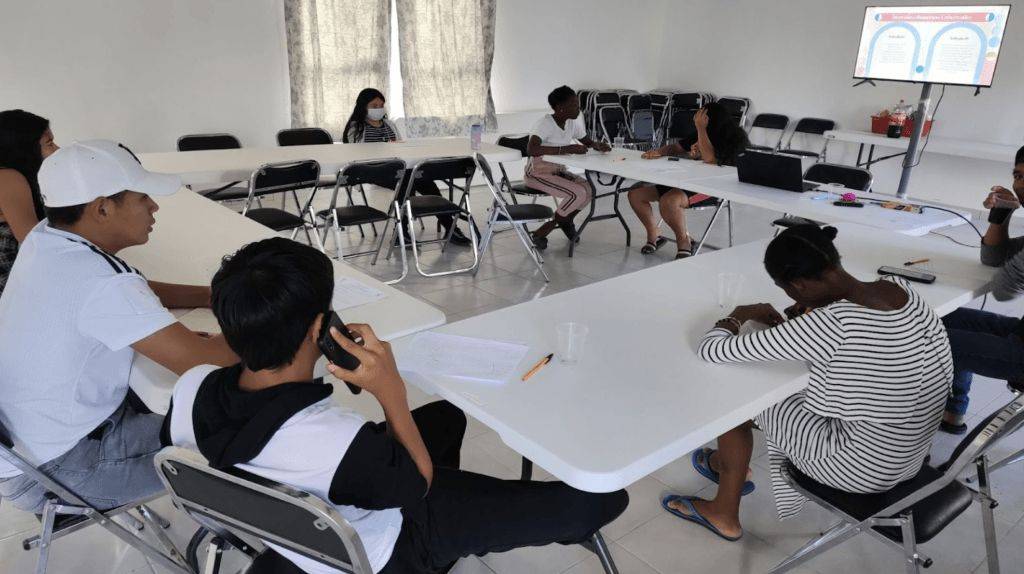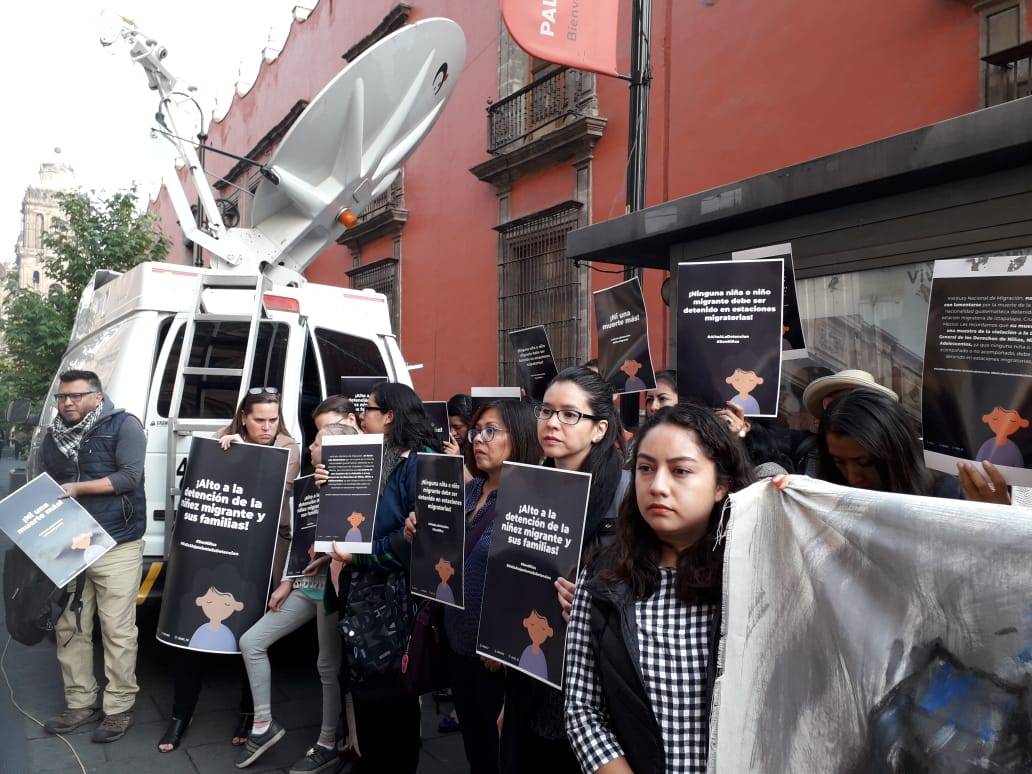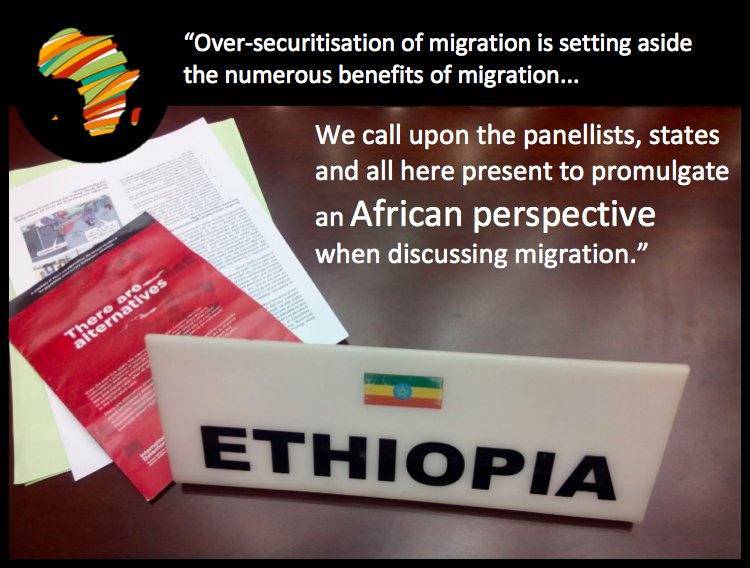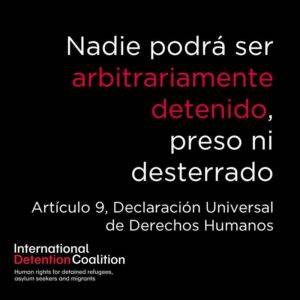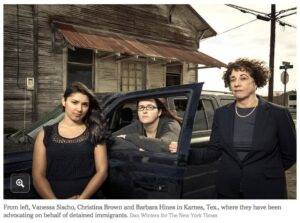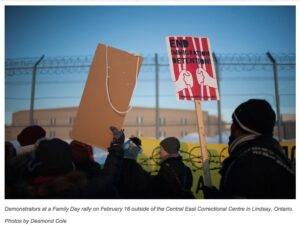Migrant Youth Leadership in Mexico
Migrant Youth Leadership Curriculum Implemented by SOS Children’s Villages in Comitan, Mexico
Guest Blog Written By Olga Carolina Abarca Alfaro, Psychologist, AISOS Comitán
International Detention Coalition and SOS Children’s Villages have once again joined forces - this time to implement a project aiming to support migrant children and young people who have been detained or who are at risk of detention, to share their life stories and feel stronger as leaders. While the project contributes to raising awareness related to the psychosocial impacts of detention, it also enables children and young people to reclaim their agency, participate in developing proposals for regulatory and public policy changes, and contribute to long-term systemic change.
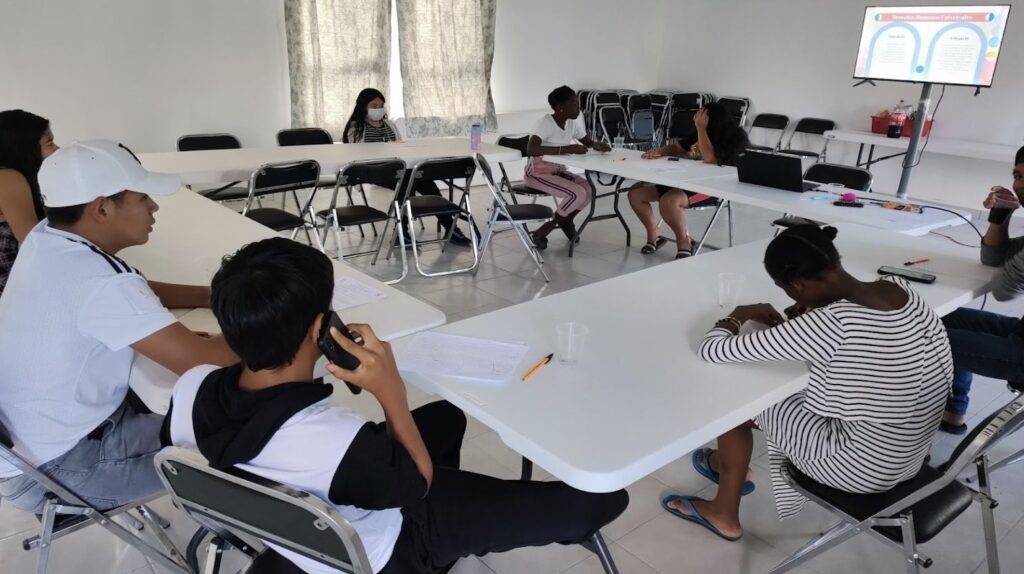
SOS Children’s Villages is an international, non-governmental organisation that works to restore the right of children to live in a family. This refers to children who, for a variety of reasons, no longer have families to care for them, or are at risk of this happening. Since the first “caravan” of people seeking refuge entered Mexico in October 2018, SOS Children’s Villages has worked in Comitan, Chiapas, the southernmost part of Mexico, to provide shelter and support to migrant communities, including many unaccompanied children.
IDC and SOS Children’s Villages have collaborated closely over the past seven years to advocate for an end to child immigration detention and alternatives to detention. This most recent project in August-September 2022, implemented the “Migrant Youth Leadership” curriculum, which was a workshop series aimed at understanding the experience of migrant children and young people who have been detained or who are at risk of detention, and supporting their growth and leadership.
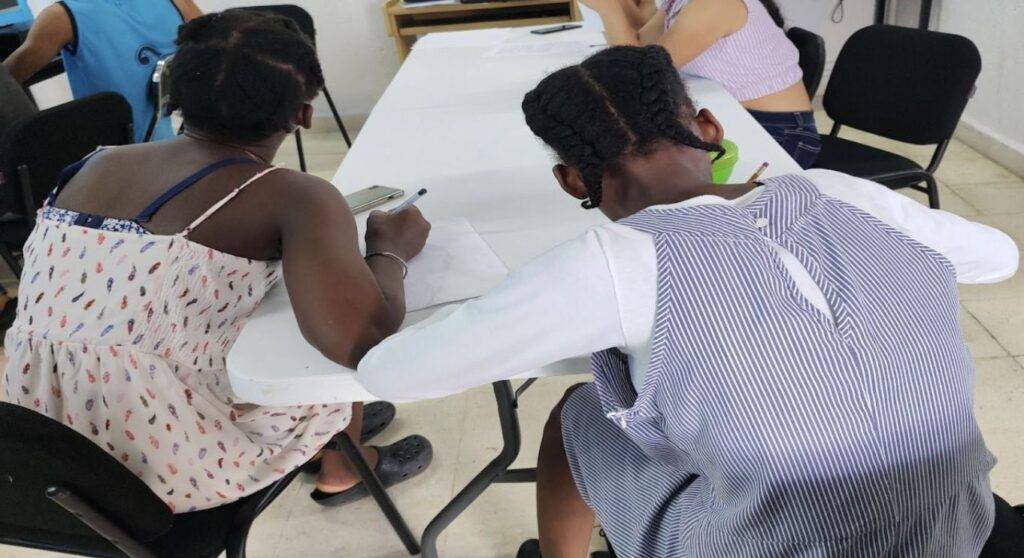
Eleven adolescents – 7 girls and 4 boys - participated in the project, originating from Honduras, Nicaragua, El Salvador, Haiti, or Ecuador. The participants were referred to SOS Children’s Villages in Comitan by the immigration authorities, and continued their asylum and immigration procedures with support from SOS Children’s Villages. At the time of the project, the participants had been in the programme for an average of one year.
The young people participated in curriculum workshop sessions with the following results:
The highest levels of participation were seen during the “Human Rights” session, in which tools regarding the respect of rights were shared. Participants shared their opinions and perspectives, and proposed ways in which more young people could access the information provided.
Participants identified their own lack of awareness of universal rights, as well as of their particular rights as migrant children, as a key factor contributing to their rights being violated.
When sharing their experiences, the participants emphasised issues with their treatment after being “sheltered” by the National Institute for Migration (INM) immigration authorities, as well as the limited information they were provided.
Sharing their experiences of what had caused them to leave their countries of origin was highly significant. Many travelled with the dream of getting to the United States to join family who live there, such as parents, siblings or aunts and uncles, while others were forced to leave their home countries as a result of harassment, violence, and threats from criminal gangs.
The emotional impact of their experiences was also an important issue for the participants. The curriculum includes a session on “Healing and Wellbeing,” in which each participant was given the opportunity to speak and express their emotions. They shared feelings about being far from home, their family and their friends, about having to abandon their dreams, about the frustration, stress, anxiety, sadness, and anger experienced when confronting obstacles during their transit. The workshops provided a space for much reflection and listening, and participants began to understand that sharing their emotions could contribute to improving their wellbeing. The session also offered tools for managing their emotions in order to better address their emotional health.
It is important to mention that the adolescents were interested in all the topics contained in the curriculum, and they appreciated that organisations, such as SOS Children’s Villages and IDC, provided these tools and methodologies. They were also grateful for a safe space in which to participate and be heard.
It is hoped that this curriculum will continue to be implemented and that more migrant children and young people have the opportunity to obtain information and develop better tools for strengthening their resilience and leadership.
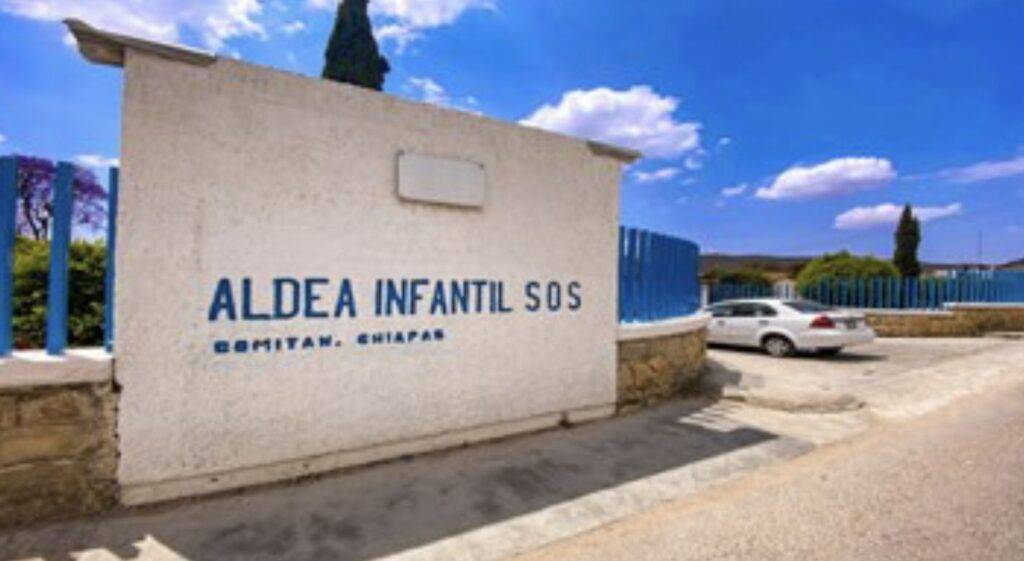
Children Dying in Detention in US & Mexico
Children Dying in Detention in US & Mexico
The deaths of children held in immigration detention were unnecessary and are unjustifiable
On May 17, 2019, IDC members and partners in Mexico gathered outside of the National Palace to demand that the Mexican government immediately end immigration detention of children. The demonstration was in response to the death of a 10-year-old girl from Guatemala who was held in immigration detention in Chihuahua and later transferred with her mother to another detention center in Mexico City.
While this is the first public death of a child in immigration detention in Mexico, in the United States, at least five children and youth have died in immigration detention in just six months: from December 2018 to the most recent death occurring on May 20, 2019.

There is no acceptable reason or justification for these deaths
For years, child development experts have confirmed time and again that detention is extremely harmful to children, regardless of the conditions or length of time of the detention. It is because of these long-term effects that regional and international standards clearly state that immigration detention constitutes a child rights violation and is never in the child’s best interest
Furthermore, both countries have regulations or legal decisions that limit use of immigration detention in the case of children, regardless of whether they are accompanied or traveling alone. In Mexico, immigration detention of children is completely prohibited, while in the United States, children must be released without delay, or detained only in exceptional cases, always in the least restrictive environment. Currently, governments in both countries are violating these national standards.
Hundreds of civil society organizations and human rights experts from the United States, Mexico, Guatemala and other countries across the region are demanding an end to the harmful practice of immigration detention of children, highlighting that:
‘These are not isolated cases; rather they are ongoing occurrences that reflect patterns of human rights violations’
(Joint Statement)
Both in the United States and Mexico, governments are able to access alternatives to detention that allow children to be free and live with their families or in residential care, where they can receive appropriate support to ensure their physical and emotional wellbeing. These alternatives could be implemented immediately in order to avoid future tragedies.
IDC grieves over these recent events and reiterate our commitment to collaborate with government and civil society in order to develop alternatives to detention that are effective and humane.
It’s time to end immigration detention of children
Some of the children and youth who died after being detained by immigration authorities in the U.S. and Mexico are:*
- Jackeline Caal, a 7-year-old girl from the Maya Q’eqchi’ community, originally from Alta Verapaz, Guatemala, died on December 8, 2018 while in custody of U.S. Customs and Border Protection in New Mexico
- Felipe Gómez Alonzo, an 8-year-old boy from the Maya Chuj community, originally from Yalambojoch, Nentón, Huehuetenango, Guatemala died on December 25, 2018 while in custody of U.S. Customs and Border Protection in El Paso, Texas
- Juan de León Gutiérrez, a 16-year-old boy from the Maya Chorti community, originally from Chiquimula, Guatemala died on April, 30 2019 while in custody of U.S. Customs and Border Protection in Texas
- A 2-and-a-half-year-old boy from the Maya Chortí community, originally from Chiquimula, Guatemala died on May 14, 2019 while in custody of U.S. Customs and Border Protection in Texas
- A 10-year-old girl, originally from Guatemala, died on May 15, 2019 in the immigration detention center (or ‘immigration station’) in Iztapalapa, México.
- Carlos Hernández, a 16-year-old boy, originally from Guatemala, died on May 20, 2019 while in custody of U.S. Customs and Border Protection in Texas
*Names and information primarily from the Mesa de Coordinación Transfronteriza Migraciones y Género México-Guatemala


You might also be interested in this read: These doctors risked their careers to expose the dangers children face in immigrant family detention
Panel on Management of Mixed Migratory Flows in North Africa and the Sahel
Junita Calder, IDC's Africa and Middle East Regional Coordinator, was invited by Honourable Commissioner and Special Rapporteur on the Rights of Asylum Seekers, Refugees, Migrants, Stateless Persons and IDPs, Maya Sahli-Fadel to speak on the panel “Management of Mixed Migratory Flows in North Africa and the Sahel”. See the panel Concept Note here.
Calder discussed the role of civil society in implementing community- based alternatives to immigration detention that are more affordable, more humane and foster greater compliance with authorities than just defaulting to the use of detention. She flagged the importance of collaboration between government and NGOs to ensure holistic support.
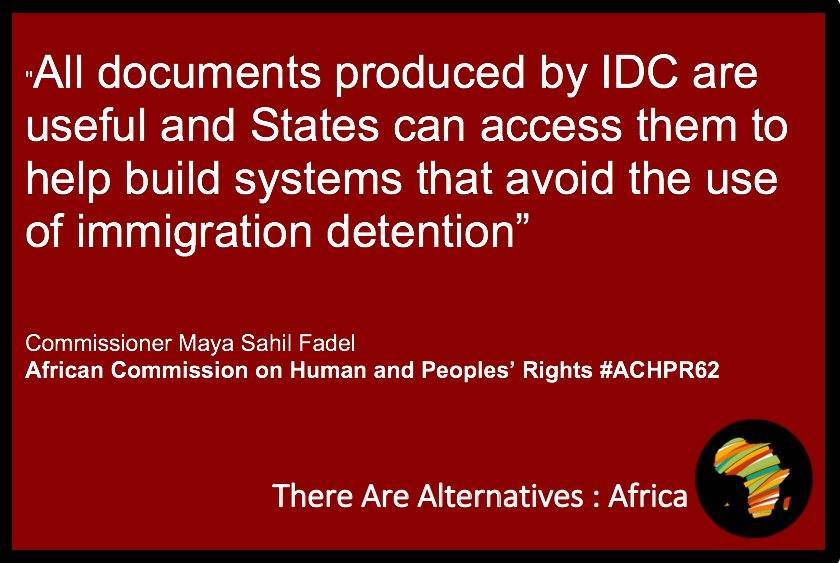
Documentary on Belgium Return Model
Belgium avoids the use of immigration detention while assisting families with failed asylum cases to leave the country.
This documentary follows the stories of three families in this situation.
This more humane policy was set up to avoid the use of immigration detention for children, for whom even short periods in detention can have long-term negative impacts on health and development. This policy is in line with the recommendation of the Committee for the United Nations Convention on the Rights of the Child, that immigration detention is never in the best interests of a child.
While this more humane policy has a lot of strong elements, this documentary also highlights some challenging aspects of the model.
Watch the whole documentary: vimeo.com/134675860
2nd Annual Meeting of the Inter-Agency Working Group (IAWG) to End Child Immigration Detention
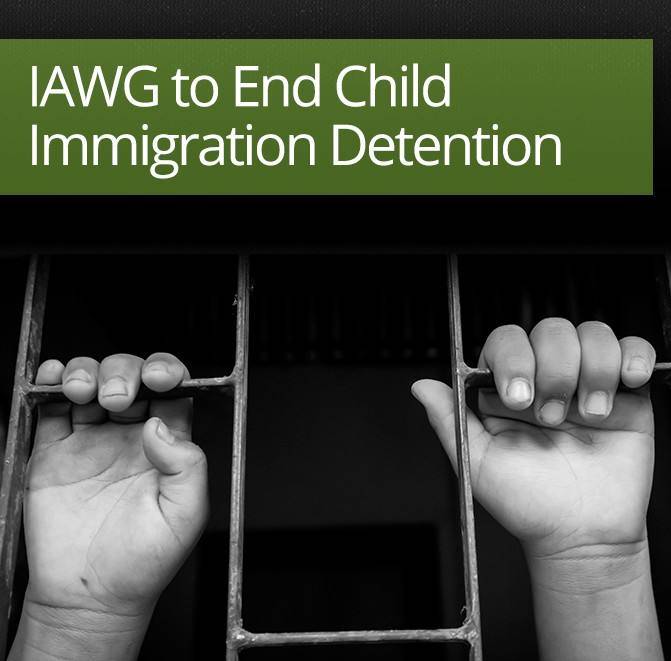 GENEVA (29 June 2015) – For the second year in a row the IDC, together with the Office of the High Commissioner for Human Rights (OHCHR), convened a multi-stakeholder meeting of child rights advocates from across the UN system and key civil society organisations.
GENEVA (29 June 2015) – For the second year in a row the IDC, together with the Office of the High Commissioner for Human Rights (OHCHR), convened a multi-stakeholder meeting of child rights advocates from across the UN system and key civil society organisations.
Beginning with the March 2012 session of the UN Human Rights Council, child and migrant rights advocates, with the support of the IDC and OHCHR, launched the Global Campaign to End the Immigration Detention of Children. This campaign has now been endorsed by over 90 organisations in more than 40 countries, and continues to grow.
In September 2012, at the Committee on the Rights of the Child’s (CRC Committee) 2012 Day of General Discussion, states were called upon to “expeditiously and completely” cease the immigration detention of children and their parents, and to adopt alternatives to detention (ATD) that fulfill the best interests of the child and allow children to remain with their family members and/or guardians in non-custodial, community-based contexts while their immigration status is being resolved.12
Throughout 2013, exploratory meetings were held with key stakeholders to follow up on this strong recommendation and in December 2013, initial conversations were had regarding the formation of an inter- agency working group to further develop and guide a global strategy to end child immigration detention.
In March 2014, a side-event was held at the UN Human Rights Council to explore “A Global Strategy to End Child Immigration Detention.” This side event highlighted the increasing prioritization of the issue of ending child immigration detention across a number of key UN agencies, civil society, and states, and explored opportunities for UN and civil society partners to provide support and resources to states to effectively end the immigration detention of children as an achievable priority in the coming years.
Immediately following the side event, an informal meeting was hosted by OHCHR and the International Detention Coalition to discuss possible collaboration. The parties agreed to form an Inter-Agency Working Group to End Child Immigration Detention in order to more effectively collaborate on ending child immigration detention. Initial parties to this conversation included:
- Caritas Internationalis
- Human Rights Watch
- International Detention Coalition
- IOM
- Office of the UN Special Rapporteur on the human rights of migrants
- Office of the UN Working Group on Arbitrary Detention
- OHCHR
- PICUM
- Terre des Hommes
- UNHCR
- UNICEF
This Inter-Agency Working Group to End Child Immigration Detention is now working together on a global strategy towards ending immigration detention of children within a 5 year framework.
For more details, email [email protected]
Upcoming IDC Workshops at ASEAN People's Forum
The IDC will be co-hosting two workshops at the upcoming ASEAN People's Forum/ASEAN Civil Society Conference on 21-24 April 2015 in Kuala Lumpur, Malaysia.
The two workshops are
- Migrants in Detention, co-hosted by IDC and Migrant Forum in Asia (23 April).
- Children in the Context of Migration: Positive Practices from the ASEAN Region, co-hosted by IDC, Terres des Homnes, Migrant Forum in Asia and the Asia Pacific Refugee Rights Network (24 April)
Full details of the forum including times and venues of the workshops can be found here
The APF/ACSC is an annual forum of civil society organizations in ASEAN Member States. It is held as a parallel meeting to the ASEAN Summit of Heads of States. During APF/ACSC, civil society organizations discuss a range of topics of importance to the ASEAN region, including human rights, development, trade, environment, youth and culture issues. The output of the forum is a joint civil society statement and recommendations that are submitted to the ASEAN Secretariat and ASEAN government representatives.
Concern over Hungary’s plans to systematically detain and immediately deport asylum-seekers
The IDC joins its member organisation, the Hungarian Helsinki Committee (HHC), in expressing deep concern regarding the Hungarian government’s plans to introduce legal amendments to systematically detain and immediately deport all irregular migrants, including asylum seekers.
In February 2015, the Prime Minister reportedly initiated a communication campaign against migrants and asylum-seekers on the pretext of the terrorist attacks in Paris in early January, which continued with a series of public statements, interviews and press conferences by senior government officials. Moreover a plenary debate in Parliament, titled “Hungary does not need 3 livelihood immigrants” was held on 20 February and a “national consultation” on the issue is to be held later in 2015.
A number of amendments are planned to the national asylum and immigration laws. These plans include enacting legislation that would enable state authorities to:
- immediately detain all irregular migrants, including asylum-seekers;
- immediately deport irregular migrants, including asylum-seekers considered as “livelihood immigrants”;
- accelerate asylum procedures so that a final decision could be taken within a few days;
- oblige irregular migrants and asylum-seekers to work while in Hungary in order to “earn their keep”.
“These plans would not only violate EU law and other international obligations, but following on a series of attacks on the rule of law since 2010, they would further undermine the country’s commitment to European democratic values,” stated the HHC in an information note published on 4 March 2015.
Hungary has experienced a sharp increase in asylum seekers over the past few years (twenty-fold between 2012 and 2014) and according to FRONTEX, the Serbian-Hungarian border section was the third main entry point to the EU for irregular migration. However, the proportion of foreign nationals living in Hungary remains comparatively low (1.4% of the population) and migrants are on average better educated and more active on the labour market (making greater contributions to social security and the health system) than Hungarian nationals. Despite this positive picture, in polls Hungary usually figures among the most xenophobic societies in the EU (see here for example).
Until the end of 2012, many asylum-seekers were held in immigration detention (idegenrendészeti ôrizet) in Hungary. The HHC, the UNHCR, the European Court of Human Rights and the European Commission strongly criticised this practice, questioning the legal ground of holding even first-time asylum-seekers in pre-deportation detention while the asylum proceedings were ongoing (see HHC information note). In response, Hungary introduced ‘asylum detention’ based on the Recast EU Reception Conditions Directive. In 2014, 4 829 asylum-seekers were held in asylum detention, often for several months.
But under international and EU law, detention of refugees, asylum seekers and irregular migrants should only be used exceptionally and as a measure of last resort, after alternatives to detention have first been pursued. Furthermore, there is strong evidence that immigration detention is not an effective deterrent of asylum seekers and irregular migrants in either destination or transit contexts. International research has shown that detention is not only expensive and harmful, it also fails to impact on the choice of destination country and does not reduce numbers of irregular arrivals.
More information
- Hungarian Helsinki Committee, Hungarian Government reveals plans to breach EU asylum law and subject asylum-seekers to massive detention and immediate deportation: Media information note (4 March 2015)
- ECRE Weekly Bulletin, NGOs raise alarms over new plans against migrants and refugees in Hungary (6 March 2015).
IRIN News, Hungary reacts to migrant influx (10 March 2015) - Hungarian Helsinki Committee: Information note on asylum-seekers in detention and Dublin procedures in Hungary (May 2014) here
- Hungarian Helsinki Committee, Brief Information Note on the main asylum-related legal changes in Hungary as of 1 July 2013
Americas News Round up February
Regional
Directora de Sin Fronteras recibe amenaza telefónica
La Coalición Internacional contra la Detención, IDC (por sus siglas en inglés) Expresamos nuestra solidaridad y apoyo al equipo de Sin Fronteras IAP.
Boletín de prensa, aquí
Carta de Nancy Pérez García, aquí
Migrant kids will flood the U.S. again, but the real crisis may hit south of the border
Ecuador registra la primera condena por tráfico de niños migrantes
En el 2014 67 mil niños de México y Centroamérica huyeron sin compañía a EU
Flood of child migrants could recede, but still be second-largest ever
Mexico/México
La Suprema Corte, ante la oportunidad de entrar al tema de la detención migratoria
ONU señala a México sobre desaparición de niños migrantes
Instalará el gobierno de Ecatepec oficina especial para menores migrantes
Garantizarían derechos de infantes. En México se discuten cambios a la Ley de Migración
United States/Estados Unidos
The Shame of America’s Family Detention Camps
A costly choice—putting immigrant kids behind bars
Cancelan por 4 años audiencias a migrantes en EU que buscan legalizar su situación
Niños migrantes indocumentados encuentran refugio en EE.UU. con familias adoptivas
Activistas desconfían de investigación sobre abusos en centro de detención
ACLU Files Lawsuit Against Homeland Security for Records Describing Abuse of Children
The Weight of 216 days. That is how long Sofía and her daughter Isabel* had to wait for a chance at release from family detention at the southern border
Canada/Canadá
Canada Is Spending Millions Keeping Immigration Detainees in Jail
Honduras
Afirma Primera Dama: Continúan atendiendo a niños migrantes. La esposa del mandatario, luego del lanzamiento de la campaña “Retorno de la Alegría”
Bahamas
“Inhumane” conditions of detention in the Bahamas: IACHR has released a press release stating that the conditions of immigration detention.
Bahamas Told to Improve Conditions at Center Housing Haitian Immigrants
How does immigration detention impact the integration of migrants and refugees?
A recently published research paper entitled "Immigration detention and its impact on integration - a European approach", questions the disconnect between migration and immigration policies in analysing the impact of migrants’ detention on their further integration into the receiving society.
The paper argues that detention and integration are considered to be distinct policy areas in the EU. However, a large number of third country nationals who are detained for immigration purposes in fact remain on EU territory. This phenomenon is also called the “deportation gap”. As a consequence, a significant proportion of individuals that have been detained also come under the scope of EU integration policies. There is therefore a need to connect these two migration-related policy areas.
"The starting point of this research is that while the negative impact of immigration detention is well acknowledged, very little attention is actually given to the situation of people after detention. The analysis so far has been put into a legal perspective (compliance with human rights and EU law) or in research looking at the criminal aspect of migration law and policy," explains the author, Anne Bathily, Project Officer for ECRE.
The first part of the paper looks at the EU frameworks for integration and detention, while the second part focuses on the long-term impact of detention, existing research evidence from various fields of science (medical research, criminology, law, political and social sciences) about influencing factors and qualitative studies conducted by several NGOs.
While taking a multidisciplinary approach, the author brings evidence to the fact that detention - and its immediate and long-term negative impact on people's mental health - also impacts the integration of migrants and refugees and has consequences on societies. The paper considers the effect of detention on the different key areas of integration identified at EU level: social inclusion, health, employment, education, family life and the two-way process of mutual accommodation by all immigrants and residents of EU Member States.
It concludes that the experience of confinement damages people's view of themselves and of others and affects the individual's ability to interact and engage with the host society. It thus has a range of consequences on all areas that are considered key for successful integration in the EU. Moreover, the paper points out that a hostile environment towards migrants can lead to unintended consequences such as damaging the feeling of belonging of settled ethnic communities and “second-third generation” migrants.
Thus, the research paper both highlights the need to “connect the dots” between the immigration detention and integration policy fields and questions the use of immigration detention given the importance the EU places on integration.
This paper adds to the current debate on integration taking place in Europe by addressing the impact certain migration policies have on the integration process and questioning the issue of policy consistency and costs for individuals and societies. By documenting the immediate and long-term negative impact of immigration detention on individuals and society, it also adds to a body of research including the IDC's "There are Alternatives".
Posted 10 February 2015
